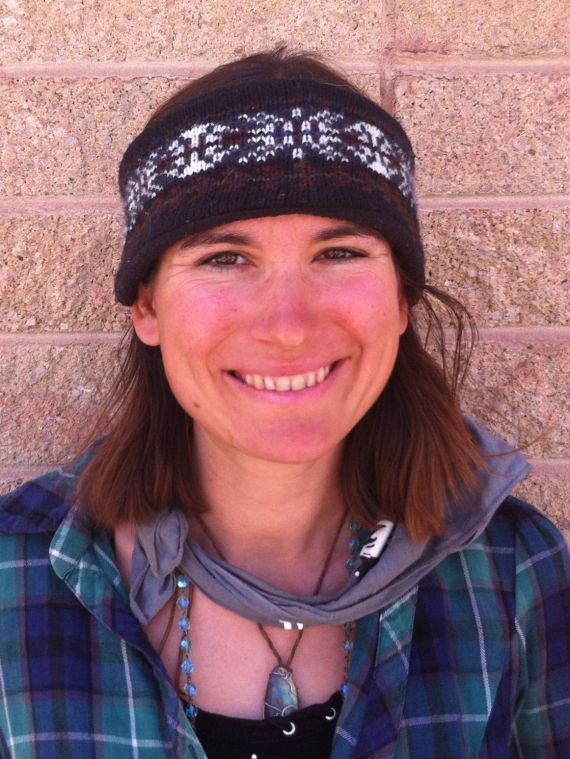You may not realize it, but you are already a hunter-gatherer. Pay attention next time you are at the grocery store. Do you scan the rows of produce, plastic gathering basket in hand, comparing the quality of the arugula and the Swiss chard, picking through piles of potatoes and deciding between Granny Smith or Gala apples? Or do you make a beeline for the meat counter and grab a pound of hamburger, only stopping long enough to grab a six pack and maybe a bag of pretzels on the way to the checkout? Either way, you are acting out the same behaviors that kept your ancestors alive in prehistoric times. Men tend toward being hunters and women gatherers, but these gender roles are not set in stone and we are both capable of both. The supermarket might seem light years away from the plains and forests where you would imagine hunter-gatherers would live, but we as a species have not changed much.
A bright red bag catches our eye and alerts us to M&Ms: a high concentration of sugar and calories, so in the basket it goes. The smell of roasting meat wafts across the store and leads us to the deli, where we buy some chicken nuggets, which if your read the fine print are made from “mechanically separated chicken” and contain ingredients like MSG, wheat flour, hydrolyzed soy protein and disodium phosphate. Most people don’t read the fine print.
Evolution has selected us to notice bright colors, to have an aversion to rotten meat and to distinguish between edible and poisonous plants. It has not prepared us to understand high-fructose corn syrup, partially hydrogenated soybean oil, modified corn starch, FD & C yellow #5 and #6, dimethylpolysiloxene, sodium acid pyrophosphate and TBHQ. It’s too much for our animal brains to handle. In other words, there were no Twinkies in the Garden of Eden.
Many people now buy organic produce and free-range meat as a solution to this chemical madness. Others grow their own gardens and even raise their own chickens in the suburbs. I’ve chosen to go a step further back in time. For the past several years I’ve been getting some of my food by foraging for wild plants. It saves money, connects me with my animal heritage and makes me healthier.
Most people assume that the best place to forage for edible plants would be deep in the wilderness, where ancient trees tower over the forest floor and wood thrushes sing by waterfalls, unheard by human ears. It may seem counterintuitive, but this is generally not the case. I’ve seen more wild edibles growing from the cracks in the sidewalk than I have in the mountains. The majority of the food plants that are useful to us humans already grow in our habitat: open, sunlit areas with compacted soil. Most of them, in fact, are what we commonly consider weeds. They hitchhiked over with us on the Mayflower and they’ve been here ever since. We can continue to attack them (unsuccessfully) with dangerous herbicides, or we can let them help us instead.
The biggest problem with foraging in the suburbs is not finding the wild edibles, but finding an uncontaminated place to gather them. The roadside, which is teeming with dandelions and burdock, is not an option because of all the pollution from the cars. Lawns are often sprayed with chemicals and peed on by dogs. Even wildlife refuges are not always safe; I recently saw a sign at one of my favorite foraging spots announcing that Roundup had been sprayed to control the non-native Phragmites.
Roundup, by the way, is one of a barrage of chemicals created by Monsanto, makers of aspartame, Agent Orange, DDT, genetically modified food – and, strangely, AstroTurf. It has been referred to as The Most Evil Corporation in the World, because its stated goal is to have the patent for the DNA of every life form on Earth, to own life and control it for its own profit.
So you have to get to know your area. I’m constantly on the lookout for promising-looking pieces of habitat when I’m walking or riding in the car. I have a spot by the railroad tracks that I walk every couple days, gathering whatever’s in season. I dig dandelions from my yard and mugwort and crabapples from the local dog park. If I see weeds in someone’s yard, I sometimes ask if I can have them. They never say no.
Julia Lupine is the author of “Road Dogs” and “Yellowstoned: A Sideways Look at Yellowstone.”



